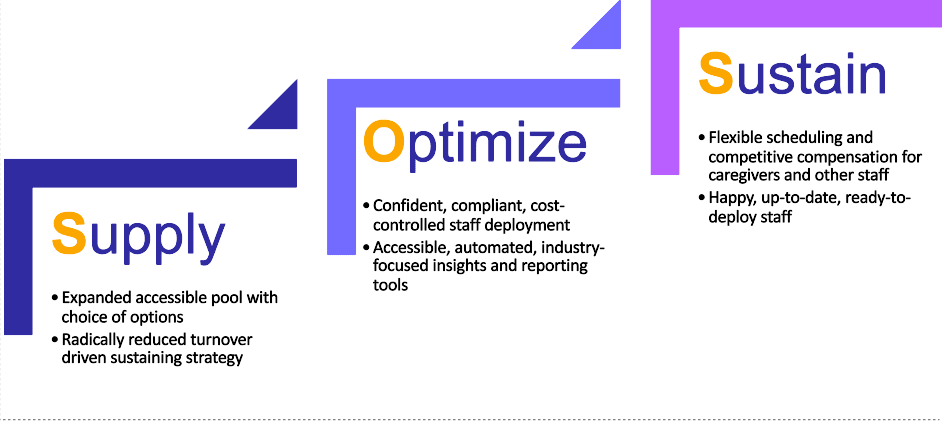It’s no secret that the senior care industry faces a myriad of challenges, from operational inefficiencies and workforce shortages to mounting regulatory pressures. These issues create an environment where staff burnout is common, and resident care can suffer. However, with the right strategies and technology, long-term care facilities can navigate these obstacles and transform chaotic settings into well-managed, calm environments.
The Growing Labor Crisis in Senior Care
Workforce shortages have become one of the most pressing issues in senior care; the U.S. long-term care sector is short over 120,000 workers. New federal mandates, such as the requirement for 24/7 RN staffing, further exacerbate this shortage. Facilities are left grappling with high turnover and recruitment costs, which can reach up to $56,000 per registered nurse.
This labor crisis not only affects the bottom line but also directly impacts staff morale and the quality of care provided to residents. It creates a vicious cycle where staff shortages lead to burnout, poor resident outcomes, and further turnover.
A Framework for Success: Supply, Optimization, and Sustainment (SOS)
 Smartlinx offers a comprehensive approach to tackling these labor challenges through its SOS (Supply, Optimization, Sustainment) framework. This model focuses on ensuring a steady supply of staff, optimizing their deployment, and sustaining employee engagement over the long term.
Smartlinx offers a comprehensive approach to tackling these labor challenges through its SOS (Supply, Optimization, Sustainment) framework. This model focuses on ensuring a steady supply of staff, optimizing their deployment, and sustaining employee engagement over the long term.
- Supply: The supply of qualified staff is dwindling, with the nursing home sector seeing an 8.3% employment decline since 2020. Facilities must prioritize recruitment efforts and utilize technology to streamline hiring and onboarding processes.
- Optimization: Navigating regulatory requirements while maintaining staffing efficiency is crucial. Advanced workforce management tools, like those offered by Smartlinx, simplify compliance reporting and help ensure optimal staff deployment, reducing administrative burdens and improving resident care.
- Sustainment: Retaining staff is just as important as recruiting them. Competitive pay, flexible scheduling, and career development opportunities are critical factors in keeping staff engaged. Technology that allows caregivers to manage their schedules and benefits through mobile platforms helps foster a positive work environment.
The Role of Technology in Overcoming Labor Challenges
Technology is a game-changer for long-term care facilities, helping to alleviate operational pressures. Automated scheduling tools, for example, ensure adequate coverage while minimizing overtime costs. Real-time data tracking provides insights into staffing patterns, compliance, and labor costs, allowing facilities to make data-driven decisions. By integrating these solutions, facilities can reduce the administrative burden on staff, enabling them to spend more time on resident care.
The Ripple Effect: Improved Staffing Leads to Better Care
Addressing staffing challenges has a ripple effect that extends beyond workforce management. Effective staffing strategies reduce turnover, enhance staff morale, and lead to better resident outcomes. When caregivers are engaged and supported, they are more likely to provide high-quality care, improving resident satisfaction and facility reputation.
By streamlining operations and fostering a supportive work environment, long-term care facilities can move from chaos to calm. With the right technology and strategies in place, they can overcome workforce shortages, ensure regulatory compliance, and ultimately improve the quality of care for residents.
The labor crisis in senior care is daunting, but not insurmountable. Facilities that embrace a combination of technology and strategic workforce management can mitigate staffing challenges, reduce costs, and create a more stable, efficient operation. By focusing on supply, optimization, and sustainment, senior care organizations can ensure their staff is supported—and in turn, provide the highest standard of care for their residents. Want to see what this can look like for you? Sign up for a demo today!





















